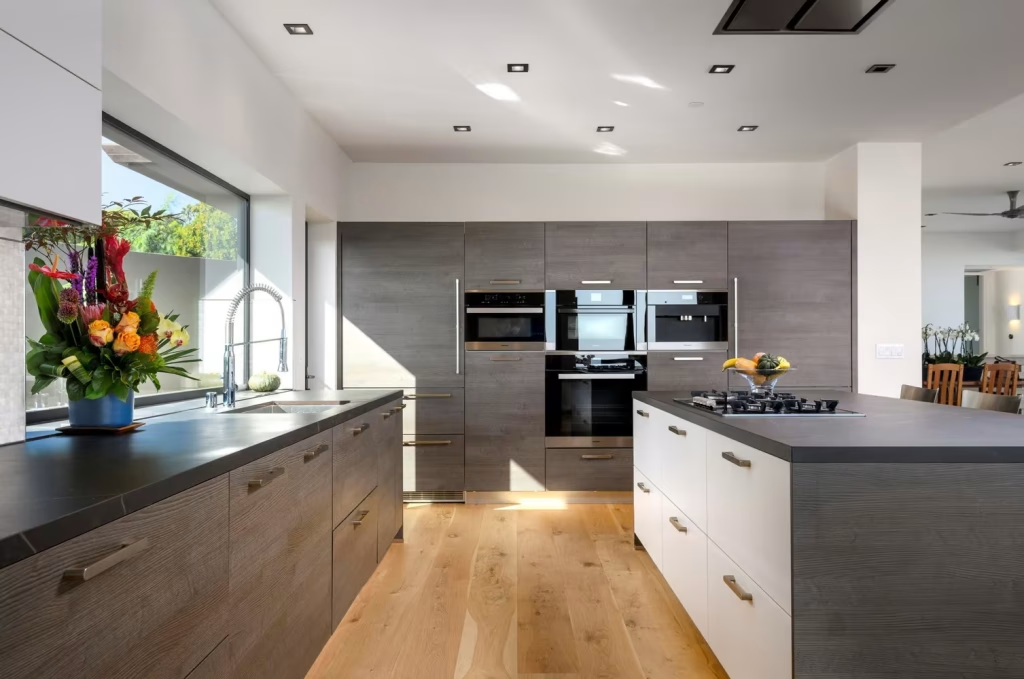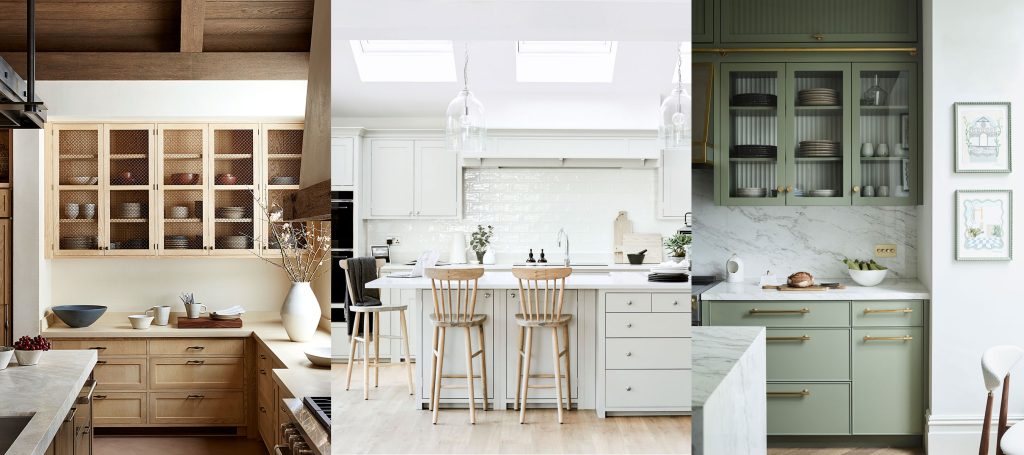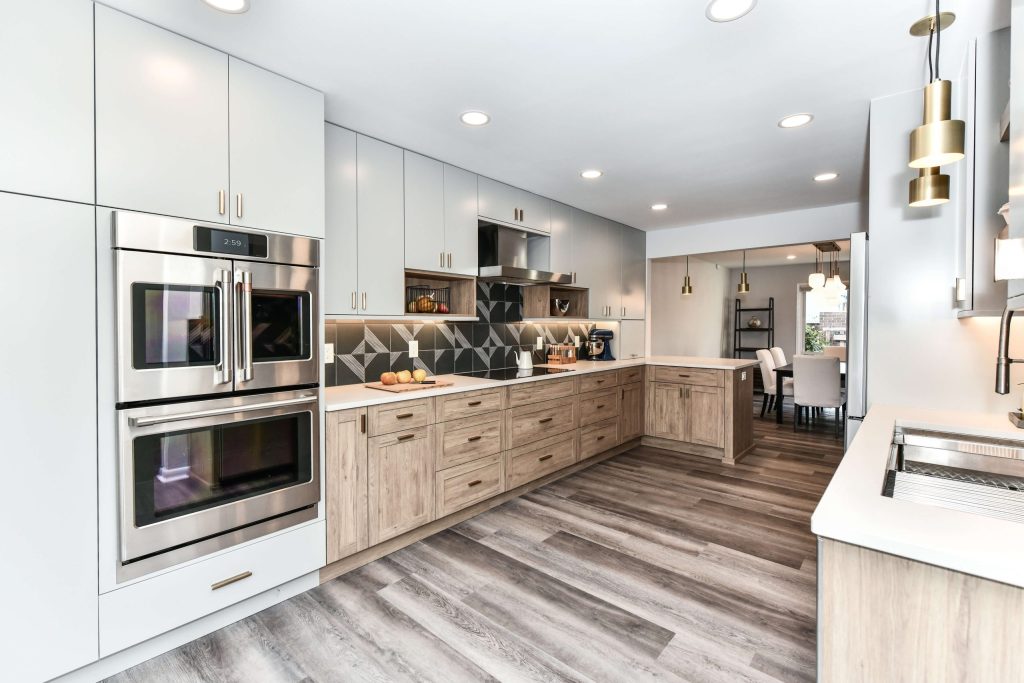In the modern home, the kitchen has evolved far beyond its utilitarian roots. No longer just a place for cooking, it has become the social and functional heart of the house—a hub where family, friends, and culinary creativity converge. As homeowners increasingly seek a balance between utility and visual appeal, kitchen renovations are embracing a design philosophy that harmonizes functionality with sophisticated aesthetics.
The Functional Foundation
Every successful kitchen renovation begins with functionality. A well-designed kitchen needs to support efficient workflows, logical layout, and intuitive access to tools and appliances. Here are a few key elements that define functional excellence:
1. Workflow Optimization (The Kitchen Work Triangle)

The classic “work triangle” – the optimal distance and relationship between the sink, stove, and refrigerator – remains a staple in layout planning. Modern adaptations, however, include zoned kitchens with distinct areas for prep, cooking, cleaning, and storage, especially in larger, open-plan homes.
2. Smart Storage Solutions
No matter the kitchen size, clutter is the enemy of function. Custom cabinetry with pull-out shelves, vertical dividers, deep drawers, and concealed compartments maximize every inch. Innovations like toe-kick drawers and appliance garages provide hidden storage without sacrificing access.
3. Integrated Appliances
Built-in and panel-ready appliances not only save space but contribute to a seamless visual design. Smart appliances with app connectivity or voice control enhance convenience and functionality.
4. Durable Materials

From scratch-resistant countertops to easy-to-clean backsplash tiles, selecting durable, low-maintenance materials ensures the kitchen remains functional under daily wear and tear.
Elevating the Everyday: Sophisticated Aesthetics
While function is foundational, today’s kitchens are also a visual expression of personal style. Sophisticated aesthetics don’t just look beautiful—they create an atmosphere, define the mood, and elevate the everyday experience.
1. Timeless Design Language
Sophisticated doesn’t mean trendy. It often involves a timeless design approach—think clean lines, neutral palettes, and quality finishes. Classic elements like shaker cabinets, marble surfaces, and natural wood tones remain enduring favorites.
2. Material Harmony

A sophisticated kitchen often features a thoughtful blend of textures: matte finishes alongside polished metals, warm woods juxtaposed with cool stones, or minimalist cabinetry contrasted by dramatic lighting fixtures.
3. Lighting as a Feature
Gone are the days of a single overhead fixture. Layered lighting—ambient, task, and accent—adds depth and drama. Pendant lights over islands or under-cabinet LED strips provide both function and flair.
4. Personal Touches
Sophistication lies in the details. Custom hardware, artisan backsplashes, and curated open shelving can reflect personality while keeping with the overall tone of refinement.
Bridging the Gap: Design Synergy

The most successful kitchen renovations are not just functional or beautiful—they are both. Achieving this balance requires close collaboration between homeowners, designers, and contractors. Here’s how to merge the two seamlessly:
- Start with lifestyle needs: How the space will be used determines the best layout and features.
- Design with restraint: Too many aesthetic “statements” can overwhelm functionality. Focus on subtle elegance.
- Invest in quality: Sophistication is often found in craftsmanship and materials that age gracefully.
- Choose flexible elements: Modular designs, adaptable storage, and timeless fixtures allow for future upgrades without major overhauls.
Conclusion
Today’s kitchen is a space where utility meets artistry—a place where meals are made, memories are formed, and aesthetics matter. Renovating with a dual focus on functionality and sophisticated design creates a kitchen that not only performs under pressure but also welcomes, inspires, and delights for years to come.
